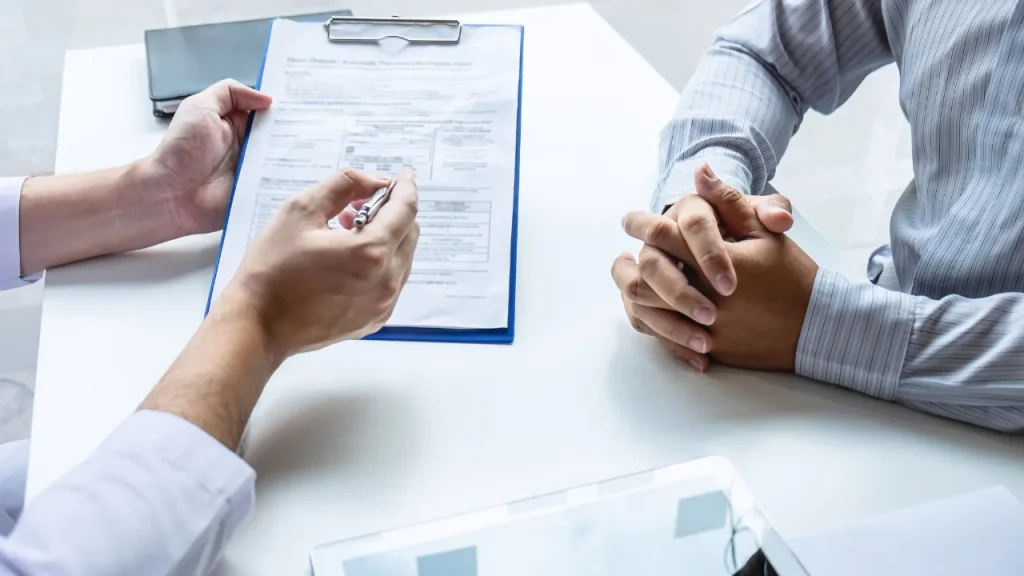Piles, also known as haemorrhoids, affect many people in India. These swollen veins in the rectum or anus cause pain, itching, and bleeding. When home remedies fail, surgery becomes necessary. Laser piles surgery, or laser haemorrhoidoplasty, offers a modern solution.
We provide this treatment at our medical organisation to help patients find relief. This article explains the procedure and recovery timeline in simple terms. We base our information on reliable medical practices used across India.
Understanding Piles and the Need for Laser Surgery
Piles occur when veins in the lower rectum swell due to pressure. Common causes include constipation, heavy lifting, or pregnancy. In India, spicy food and low-fibre diets often contribute to this issue.
Mild cases improve with diet changes, but severe piles require medical help.
Laser piles surgery uses a focused laser beam to treat the swollen tissue. Doctors call it laser haemorrhoidoplasty.
This method shrinks or removes the affected veins without large cuts. It suits patients with internal or external piles that do not respond to other treatments.
We recommend this surgery for grades 2 to 4 piles. Grade 1 piles often resolve with medicine, but higher grades need intervention. The procedure targets the blood supply to the piles, causing them to shrink. Patients choose it because it involves less pain than traditional methods.
Benefits of Laser Piles Surgery
This surgery stands out for its precision. The laser seals blood vessels as it works, reducing bleeding. Unlike open surgery, it leaves no open wounds. This lowers infection risk and speeds healing.
Recovery happens faster. Most patients return home the same day. They resume daily activities within a few days. We see low recurrence rates with this method. It preserves healthy tissue around the area.
In India, costs range from Rs. 45,000 to Rs. 92,000. Factors like the city and the hospital affect the price. For example, in Delhi or Mumbai, it may cost more than in smaller cities like Kanpur. Insurance often covers it if you stay in the hospital for 24 hours.
Compared to open surgery, laser treatment uses local anaesthesia. This avoids risks from general anaesthesia. Patients experience minimal blood loss and discomfort.

Preparing for Laser Piles Surgery
Preparation starts with a consultation. Your doctor reviews your medical history. They ask about symptoms like bleeding or pain during bowel movements.
A physical exam follows. For internal piles, the doctor uses a gloved finger to check the rectum.
Tests help confirm the diagnosis. An anoscopy views the anal canal. A sigmoidoscopy checks the lower bowel. Blood tests ensure you are fit for surgery. We advise quitting smoking and alcohol weeks before. These habits slow healing.
Fast for 8 to 12 hours before the procedure. Arrange transport home, as anaesthesia may cause dizziness.
Inform your doctor about any medicines you take. They adjust as needed.
On the day, wear comfortable clothes. The hospital provides a gown. Nurses prepare you with an enema to clear the bowels. This step ensures a clean surgical area.
The Laser Piles Surgery Procedure
The surgery takes about 30 minutes. It happens in an operating room. You lie on your back with legs apart, in the lithotomy position. This gives the surgeon clear access.
Anaesthesia numbs the area. Most cases use local anaesthesia, so you stay awake but feel no pain. The surgeon inserts a proctoscope. This tool has a Doppler probe to find arteries feeding the piles.
A laser fibre goes through the proctoscope. The laser targets the identified spots.
It delivers energy to shrink the tissue. Blood vessels contract, cutting off supply to the piles. The haemorrhoids reduce in size without cuts or stitches.
Types of laser procedures vary. Haemorrhoidal Laser Procedure (HeLP) uses low energy to shrink tissue quickly. Laser Haemorrhoidoplasty (LHP) applies higher energy for larger piles. Laser Haemorrhoidectomy removes tissue if needed.
The surgeon monitors the process. They ensure only affected areas receive treatment. Healthy tissue remains unharmed. At the end, they remove the tools. You move to a recovery room for observation.
This method causes minimal damage. It avoids the pain of traditional excision. We perform it as an outpatient service in our facilities across India.
Immediate Aftercare Following the Procedure
After surgery, you rest in the recovery area. Nurses, check your vital signs. The anaesthesia wears off within hours. You may feel slight discomfort, like tenderness in the anus.
Most patients go home the same day. We provide pain relief if needed. Over-the-counter options often suffice. Drink plenty of water to stay hydrated. Eat light meals at first.
Expect some spotting of blood on tissue paper. This is normal and stops soon. Use soft wipes to clean gently. Avoid straining during bowel movements.
We give instructions before discharge. Follow them to aid healing. Schedule a follow-up visit in a week.
Recovery Timeline: What to Expect Week by Week
Recovery varies, but most patients heal quickly. We outline a typical timeline based on common experiences in India.
Day 1 to Day 3: Initial Recovery
Rest at home. You may feel mild pain or burning during bowel movements. Take stool softeners to ease this. We prescribe them to prevent constipation.
Sit in warm water baths, called sitz baths, twice a day. This soothes the area and promotes blood flow. Each bath lasts 10 to 15 minutes. Pat dry gently afterwards.
Eat fibre-rich foods like fruits, vegetables, and whole grains. Common Indian options include dal, roti, and sabzi. Drink 8 to 10 glasses of water daily. Avoid spicy foods that irritate the bowels.
Resume light activities. Walk short distances to improve circulation. Avoid sitting for long periods. If you work a desk job, use a cushion.
Some discharge may occur. It looks like mucus and may stain undergarments. Use pads to stay comfortable.
Week 1: Building Comfort

By days 4 to 7, pain decreases. Many patients return to work. Office jobs in cities like Bangalore or Hyderabad allow this.
Continue sitz baths and fibre intake. Bowel movements become easier. If bleeding persists, contact your doctor. We monitor progress in follow-up calls.
Avoid heavy lifting or exercise. Strenuous tasks delay healing. In rural areas of India, farmers wait longer before fieldwork.
Sleep on your side to reduce pressure. Use loose cotton underwear for comfort.
Week 2 to Week 4: Steady Improvement
Discomfort fades. You perform normal tasks without issues. Full recovery nears for most.
Introduce mild exercise like walking. Aim for 30 minutes daily. This prevents future piles by aiding digestion.
Watch for signs of complications. Rare issues include infection or excessive bleeding. Fever or swelling means you should seek help right away.
In this phase, patients in India often resume travel. Commuting by train or bus becomes possible.
Week 5 to Week 8: Full Recovery
By week 6 to 8, healing is complete. You feel normal. Tissue fully shrinks, and symptoms vanish.
We conduct a final check. It confirms no recurrence. Maintain a healthy lifestyle to stay piles-free.
Long-term, eat balanced meals. Include curd and buttermilk for gut health, which is common in Indian diets. Exercise regularly and manage weight.
Managing Pain and Discomfort During Recovery
Pain stays minimal with laser surgery. Unlike open methods, it avoids deep cuts. Still, some feel soreness.
Use ice packs wrapped in cloth for 10 minutes at a time. This reduces swelling. Alternate with warm baths.
Over-the-counter creams help with itching. Apply as directed. Avoid aspirin, as it increases bleeding risk.
If pain worsens, we adjust your plan. Most patients need little medication.
Diet and Lifestyle Tips for Faster Healing
Diet plays a key role. High-fibre foods soften stools. Examples: papaya, banana, oats, and leafy greens. In India, add millets like ragi to meals.
Avoid constipation triggers. Limit tea, coffee, and processed foods. Drink herbal teas instead.
Stay active. Yoga poses like the child’s pose ease pressure. Practice daily for 15 minutes.
Hygiene matters. Wash the area with mild soap after bowel movements. This prevents infection in humid Indian weather.
Potential Risks and When to Seek Help
Laser surgery is safe, but risks exist. Uncontrolled bleeding happens rarely. Healthy tissue damage is uncommon with skilled surgeons.
Watch for fever, severe pain, or pus. These signals indicate infection. Contact us immediately.
Recurrence is low, but poor habits increase it. Follow our advice to minimise this.
Why Choose Laser Haemorrhoidoplasty in India
In India, this surgery is growing popular. Hospitals like Sahaj Hospital ensure quality care at centres.
Patients prefer it for a quick return to life.
Insurance covers most cases. Check your policy for details.
Final Thoughts
Laser piles surgery provides effective relief. The procedure is straightforward, and recovery is swift. Follow the timeline and tips for the best results. At our organisation, we support you throughout the process. Contact us for personalised advice.
